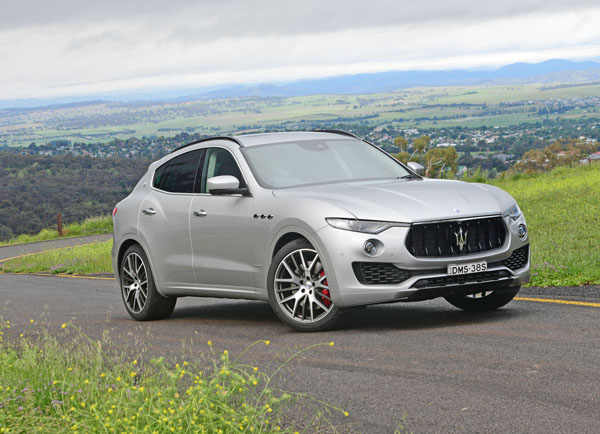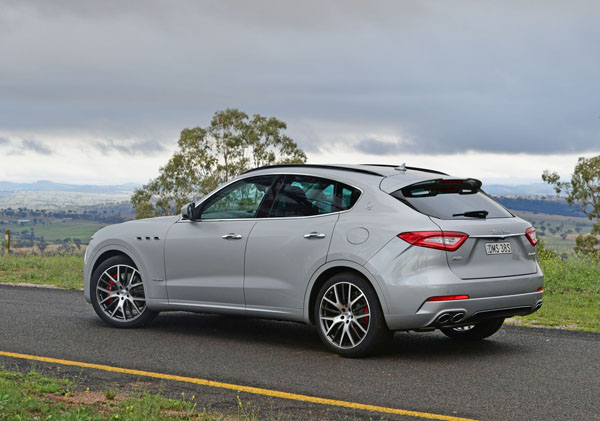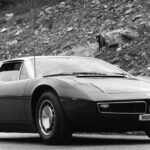 When Maserati launched its Levante SUV in Australia in February it came only with a diesel engine. Why? Because at that time all petrol models were fitted with the steering wheel on the wrong side for Australia. A silly mistake that has now been rectified.
When Maserati launched its Levante SUV in Australia in February it came only with a diesel engine. Why? Because at that time all petrol models were fitted with the steering wheel on the wrong side for Australia. A silly mistake that has now been rectified.
Following pressure from Australia, the UK, South Africa and other countries where people drive on the left side of the road Maserati Levante is now available with a Ferrari-built twin-turbo 3.0-litre V6 with 321 kW (430 horsepower) and 580 Nm of torque for the 2018 season.
All versions of the Levante have an eight-speed ZF automatic and drive through the Maserati Q4 Intelligent AWD and a mechanical limited-slip differential.
Levante is based on the Maserati Ghibli/Quattroporte platform, revamped to offer sporty on-road driving thanks to an ideal 50:50 weight distribution and the segment’s lowest centre of gravity.
Maserati Levante sales have been brilliant in Oz, indeed in many markets around the world, so the importer has introduced GranSport and GranLusso versions of Levante.
Luxury is the key to Levante GranLusso, with such features as Zegna silk upholstery and soft-close doors that pull themselves shut. As Levante really isn’t aimed at those planning off-road driving, we can see the GranLusso getting the tick from many buyers.
Personalisation is a major feature in this class and no one does it better than the Italians. You can choose from seven alloy wheel designs, five of which are new for 2018. Five interior trim choices, two steering wheels.
Even different colours for the brake calipers. Curiously, our European cousins see Yellow as being a sporting colour, whereas Aussies opt for Red. So our cars get red calipers. Ah, the vagaries of perception, and the need for a deep understanding of customer needs.
Interestingly, Australia and NZ Maserati COO, Glen Sealey, sees the Levante not as a ‘prestige’ vehicle, but as an ‘exclusive’ one. His reasoning is that the big name Germans and Brits are dabbling in so many low-cost areas, and consequently have lost some of their prestige shine.
DRVING
Maserati flew us out to the back blocks surrounding Bathurst to enjoy the neat combination of wide open spaces and brilliantly scenic hilly roads.
None of our driving was done off sealed surfaces as horrible weather during the preceding days had caused significant damage, there had been some landslips and many trees were down.
Engine response is pretty good, obviously there’s some turbo lag, but we have felt worse. The automatic transmission is quick to recognise the driver’s need for added grunt by making fast downshifts.
Once the lag has gone and the right gear is there the big Maser really flies to make light work of safe overtaking. Hills are dispatched as though they weren’t there. We have no reason to doubt Maser’s claim of zero to 100 in 5.8 seconds.
However, we were disappointed with the quality of the engine’s sound. It didn’t really bellow at its Italian best till revs got into the mid 4000s. From then onwards it was simply brilliant – the sort of aural output that has you powering down the windows to enjoy it.
Handling is tenacious with far more grip than is ever likely to be called on by most drivers. On high-speed sweeping stretches it’s brilliant, with neat steering and seat-of-the-pants feedback that gives it a sporty feel.
It produces safe understeer if you really push hard, but backing off and unwinding a little lock quickly bring it back on line again.
Inside, the first thing you see is the very Maserati analog-look clock sitting proudly at the top of the dashboard. The instruments are large and clear and very definitely aimed at the driver.
There’s an 8.4-inch central touchscreen to control many vehicle and infotainment functions, including Apple Carplay, Android Auto and Siri voice recognition.
Maserati Levante’s design has a bold front, with coupe like lines at the rear. The rear seats are set up for two, with a smaller third seat between them. Legroom in the rear is good, but headroom is restricted if a sunroof is fitted.
Air suspension provides six different height levels, with a selection for both on- and off-road situations. The driver can alter the ride height via a rocker switch or by choosing different driving modes on the central console. Again, we went for the sporty settings.
The luggage compartment holds 580 litres. Transporting tall bulky items could be difficult due to the slippery tail treatment – but hey, this is a stylish Italian sporty machine, not a boring German load carrier.
A smart feature is that the push-button to close the tailgate is low down in the interior side panel, not in the tailgate itself where it can be hard to reach.
SUMMING UP
Would we buy a Maserati Levante? Yes, but only if we needed good interior and luggage space. If not, give us a low slung Ghibli any time.













